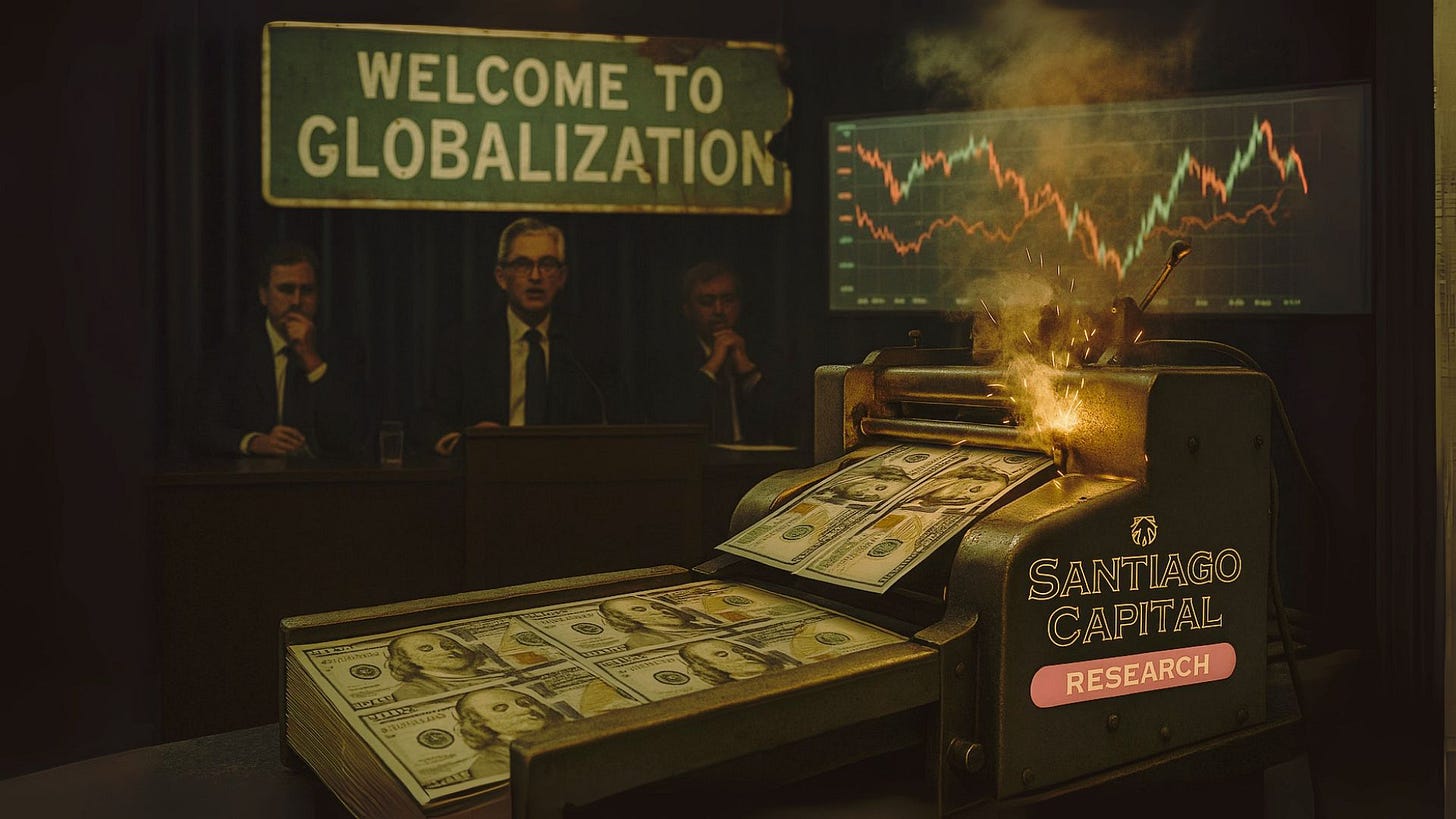Overbought, Overextended, Overconfident? A Macro Pilgrims Ledger (Sunday, Sept 21, 2025)
Central banks have shifted...now the data takes center stage. Will inflation cool, housing wobble, or consumers crack first? The week ahead may decide. This week's A Macro Pilgrims Ledger (9/21/25).
Central banks defined the week.
The Federal Reserve, the Bank of Japan, and the Bank of England each made decisions that investors had been watching closely, and markets responded with mixed signals.
Equities managed gains in places, bonds sold off, and currencies adjusted as traders recalibrated expectations.
The immediate takeaway is that policy remains the dominant force in global markets.
Relief from central bank actions can lift sentiment, but the divergence across asset classes shows that confidence is fragile and interpretations vary.
What mattered most this week was not just the outcomes themselves, but how unevenly they were absorbed.
“It is not the strongest of the species that survive, nor the most intelligent, but the one most responsive to change.”
— Charles Darwin
The Week That Was
Last week began with the Empire State Manufacturing Survey, and the outcome was troubling: business conditions in New York State contracted. The headline index plunged to −8.7, the first negative reading since June, with new orders and shipments falling sharply.
Then came U.S. Retail Sales (August) and Industrial Production & Capacity Utilization (August). Retail sales beat expectations, rising about 0.6% month-over-month, with core retail also strong, though inflation and tariffs complicate the picture.
Next was U.S. Business Inventories: inventories posted a moderate increase of 0.2%, matching the prior month’s gain, buoyed by sales which rose more robustly. Year-over-year inventories rose ~1.5%. The inventory-to-sales ratio edged down slightly, reflecting strong demand relative to stock accumulation.
The key moment was the FOMC Rate Decision & Press Conference. As widely anticipated, the Fed cut rates by ¼ point, bringing the target range to 4.00-4.25%, citing labor market weakness even as inflation pressures remain. Powell framed the move as “risk-management,” with indicators mixed—but strong enough in spending and production to give pause to any aggressive cuts.
Thursday’s data—Initial Jobless Claims and the Philadelphia Fed Manufacturing Index showed signs of labor market softness and regional manufacturing weakness. Jobless claims edged up, while the Philly Fed index remained weak, underscoring stress in factory orders outside of strong sectors.
Macro / Policy
The Federal Reserve took its first step toward easing, cutting rates by 25 basis points and framing the move as “risk management.” Powell acknowledged cracks forming in the labor market, but inflation remains uncomfortably high, leaving the Fed in a bind: deliver relief to growth without reinforcing price pressures.
Markets are already leaning toward further cuts, though the optics of easing against sticky inflation complicates the path ahead.
In Japan, the Bank of Japan held its benchmark rate steady at 0.5% but announced it would begin unwinding its ETF holdings. The decision marks a symbolic shift away from years of extraordinary stimulus, even as yield-curve control remains intact.
The message was clear: policy is no longer on autopilot, and Tokyo is preparing for a slow retreat from emergency footing.
Across the Atlantic, U.K. inflation held at 3.8% in August, underscoring the difficulty facing the Bank of England. Policymakers kept rates on hold, choosing caution in the face of stubborn price growth and fragile activity.
Outside the central banks, trade and politics added pressure. Tariffs continue to weigh on U.S. manufacturing, while global supply chains are being reshaped by new trade agreements and policy realignments.
In Washington, polarization and security concerns remain a live backdrop, reinforcing the sense that economics and politics are increasingly inseparable.






